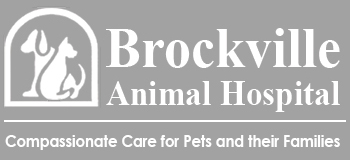Library
-
Birds of all species are innately designed to hide symptoms of illness until later stages of a disease process. Any signs of a change in appetite or behavior should be brought to the attention of an avian veterinarian. If an avian patient stops eating, this becomes a life-threatening situation quickly.
-
Antibiotic-resistant bacterial infections are bacterial infections that are minimally or no longer responsive to commonly used antibiotics. Although these bacterial infections occur naturally, the frequent and/or inappropriate use of antibiotics accelerates the process. Cats with certain medical conditions may also be predisposed.
-
Antibiotic-resistant bacterial infections are bacterial infections that are minimally or no longer responsive to commonly used antibiotics. Although these bacterial infections occur naturally, the frequent and/or inappropriate use of antibiotics accelerates the process. Dogs with certain medical conditions may also be predisposed.
-
Aortic stenosis is a heart disease that is present at birth. Cats affected with aortic stenosis have a narrowing at the aortic valve of the heart. The clinical signs of aortic stenosis vary depending on how severe the stenosis is; some cats remain asymptomatic throughout their life, while other cats begin showing clinical signs at an early age and can experience sudden death. The treatment of aortic stenosis depends upon the severity of the condition.
-
Aortic stenosis (or a narrowing involving the aortic valve) is a less common heart disease that has a higher incidence in some breeds. Dogs may not show clinical signs if they are mildly affected to more severely affected patients showing signs of heart dysfunction. Diagnostic imaging is needed to determine the severity and prognosis for each individual patient. Medications are the mainstay treatment but for some patients surgical procedures may be considered.
-
Topical ear medications are necessary for the treatment of most ear conditions in cats. This article provides step-by-step instructions on how to apply ear medications along with precautions. Tips are also given to reduce your cat’s anxiety with ear treatment.
-
Topical ear medications are necessary for the treatment of most ear conditions in dogs. This article provides step-by-step instructions on how to apply ear medications along with precautions. Tips are also given to reduce your dog’s anxiety with ear treatment.
-
Applying eye ointments to your cat's eye(s) can be a challenging or easy task. The proper administration of eye medications is essential for your cat's prompt recovery. It is important to use the medication as directed for the full duration and contact your veterinarian if you have problems. The tips and instructions in this handout may make administering your cat's eye ointment easier.
-
Applying eye ointments to your dog's eye(s) can be a challenging or easy task. The proper administration of eye medications is essential for your dog’s prompt recovery. It is important to use the medication as directed for the full duration and contact your veterinarian if you have problems. The tips and instructions in this handout may make administering your dog’s eye ointment easier.
-
Applying topical medications to your pet can sometimes be a challenge. Creams, ointments, and lotions are for external use only. It is important to prevent your cat from licking and swallowing any of these external preparations as they may contain ingredients that could be harmful if swallowed. Most topical preparations work better if they are gently massaged in for a few moments after application. It is always a good idea to get someone to help hold your cat, especially when applying medications on a sensitive or painful area. If you still have trouble keeping your pet from licking the medication, please contact your veterinarian to get your cat fitted for an Elizabethan collar.

